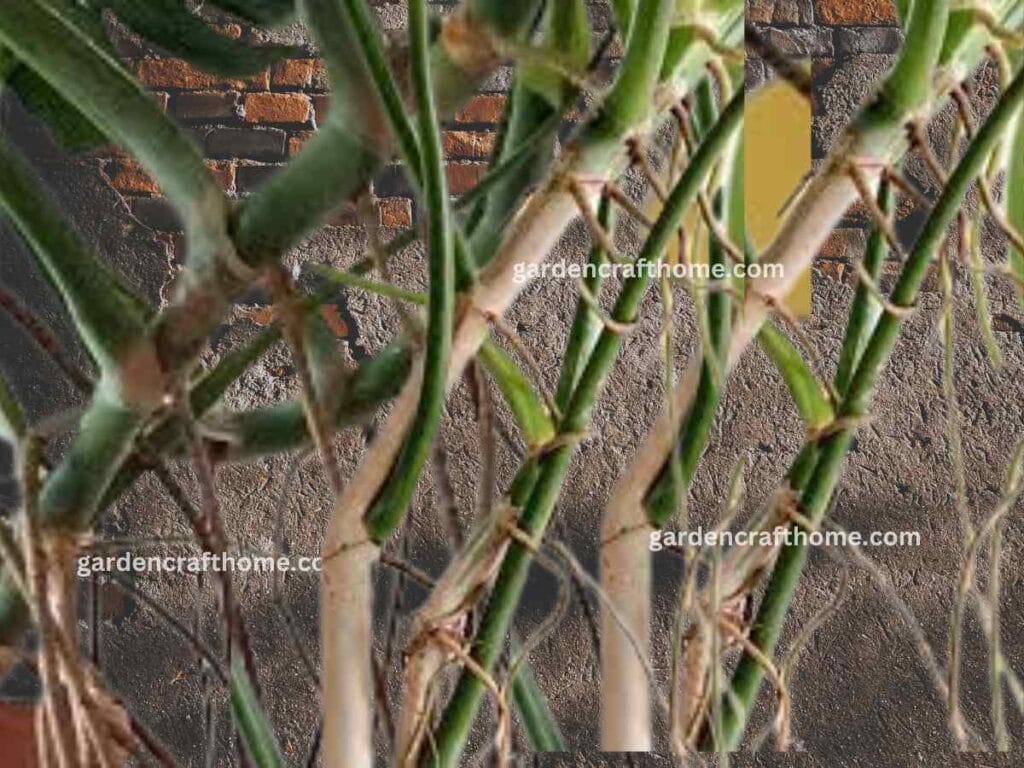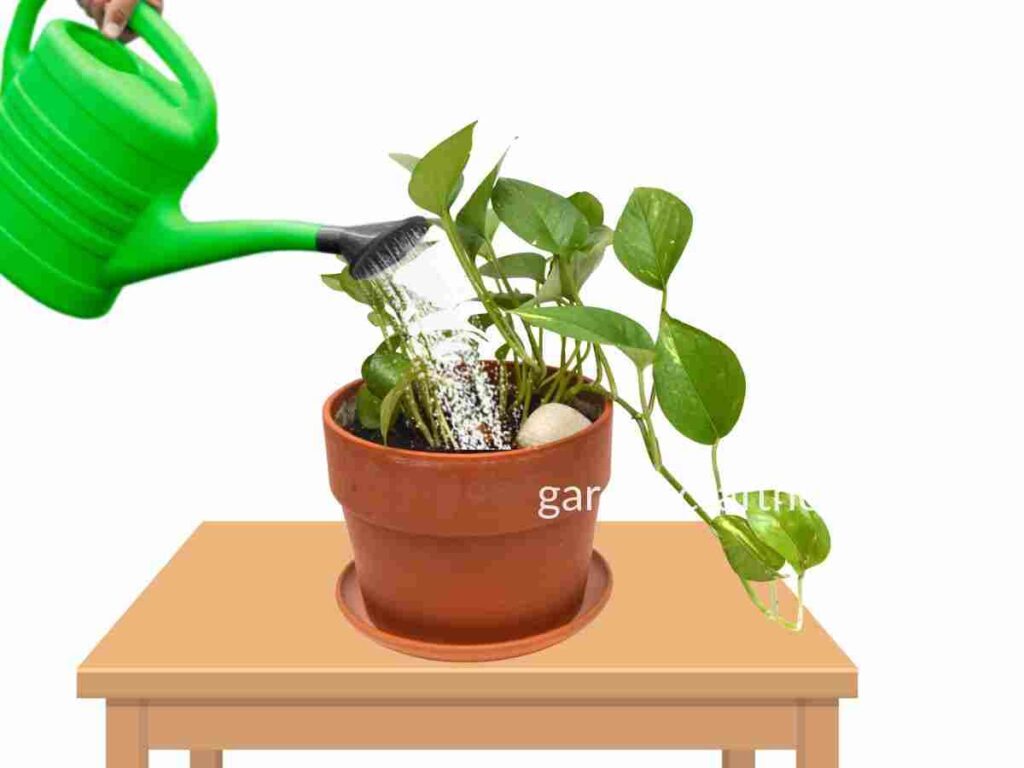How often to water Monstera A monstera should water approximately every 1-2 weeks in summer water and weekly in winter water for 2 to 3 weeks.
I am an expert in watering plants, so in today’s discussion, I’m going to let you know the following.
- When to water your plant
- How much water they need
- How to know if you are giving too much water
- Fertilizing after watering
- The best type of water to use, and
- Problem due to overwatering
I have provided a table of contents; feel free to use it to navigate to any section you want.
If you are interested in knowing how to water spider plants, click here for more information.
How Often To Water Monstera
A monstera should be watered approximately every 1-2 weeks; however, it’s crucial to monitor the moisture level of the soil before watering. This is the most important thing.
Watering based on days does not really matter; what matters is soil moisture level.
Monstera Deliciosa should be watered when the topsoil is dry so as to allow the roots to dry between waterings and thus avoid the risk of root rot.
To understand exactly when to water, you should insert a finger 4-5cm into the soil. If it is still humid, wait a couple more days; if it is dry, proceed with watering.
How Often To Water Monstera In Summer
In summer, water weekly because during this season, The monstera is now undergoing a vigorous growing phase; during the summer, we tend to water our plants more frequently than in winter.
But it is advisable to check the moisture level before watering and also monitor your plant for individual needs if it needs adjustment.
Factors that can influence watering time in Monstera are temperature, humidity, environment, potting mix, plant size and pot size.
How Often To Water Monstera In Winter
In winter, monstera should be watered every 2-3 weeks because they require less water. After all, the plant’s growth slows down.
It is advisable to allow the top 2 inches of soil to dry before watering. To check the moisture level, use your finger or a moisture meter tester.
There are other methods of checking a soil moisture level, which I will discuss immediately after this section.
How To Know When Monstera Needs Water Or How To Check The Moisture Level For Monstera
There are three primary ways to check moisture levels for monstera and other house plants. With this method, you will know when your monstera plant needs water.
Finger Test method
The finger test method is the cheapest and easiest way to test soil wetness for any plant.
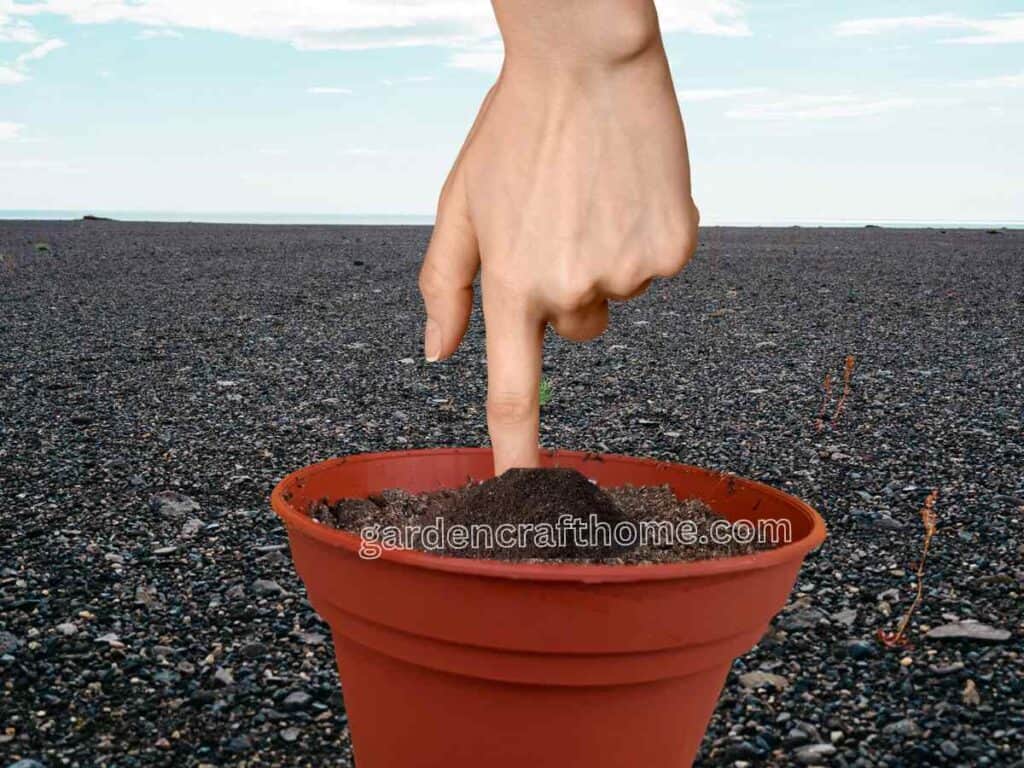
This process requires you to dig your finger into the soil about 2 inches to fill it if the soil is wet or dry.
If the earth feels dry on your finger, then water it properly. Continue reading why I show you how to water your monstera. But if the soil feels wet, there is no need for water.
Weight Of The Pot
Another method to understand if the Monstera needs water is by feeling the weight of the plant.
A light pot means that the soil is dry, and a heavy one still contains water.
Obviously, this system requires a little practice and sensitivity; for those who are just starting, I recommend using the finger method to leave no room for doubt.
Soil Moisture Meter
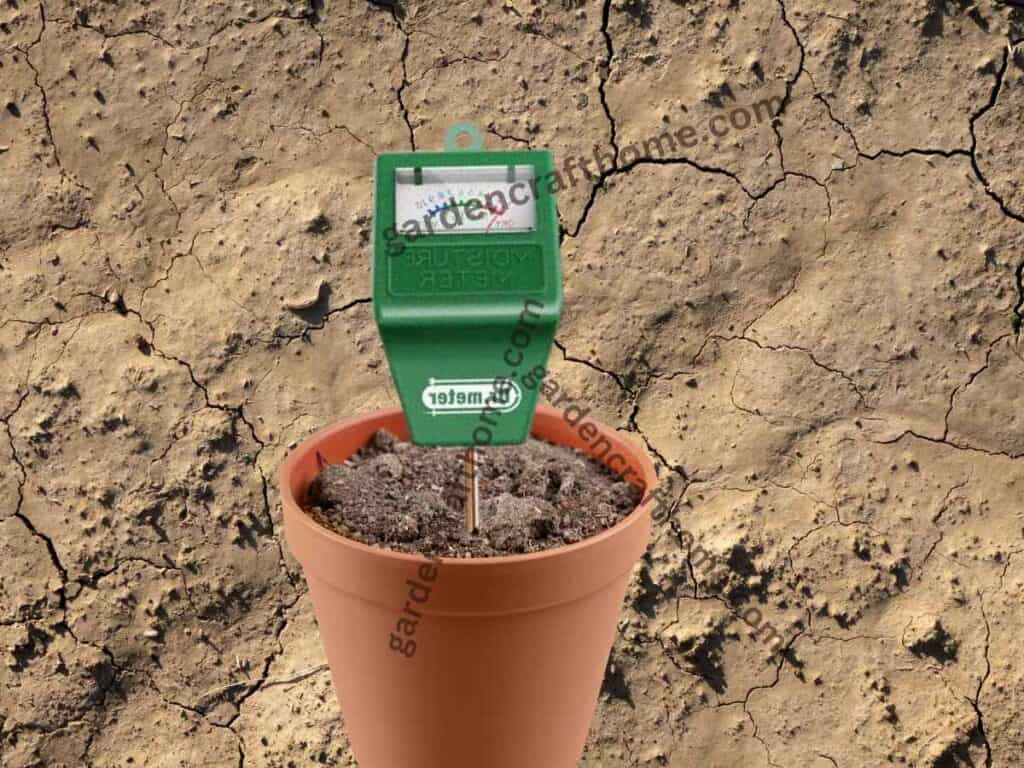
A moisture meter is another great way of checking soil moisture levels. This device reads accurately with the help of the probes that you insert into the soil.
How Much Water Should I Give To Monstera?
Once the soil is dry, proceed to water the Monstera with an abundant quantity of water.
Pour the water until the pot gets full, and allow the excess water to come out of the drainage holes in the pot.
The water that stagnates in the saucer must then be removed so that the air can circulate again within the soil pot for pot, with 4 or more drainage holes.
Don’t water again without the water draining from the bottom of the pot because you run the risk of the soil remaining constantly moist or limestone (and fertilizer) accumulating.
Using good soil (airy and draining) is essential to be successful with Monstera and not run into problems due to too much water, stagnation and consequent root rot.
If you are still using the original potting soil, consider repotting the Monstera in a more free-draining medium, or make sure it is dry before watering.
If you wish to learn how to report your monstera, click here.
Which Water Should I Use To Water My Monstera Plant?
To water the Monstera, you can use rainwater, demineralized water or tap water.
Generally speaking, this plant tolerates calcareous water well, although in extreme cases, problems of excess salinity and pH may arise.
To avoid causing a thermal shock to the roots, it is best always to use water at room temperature. At 20°C, it would be perfect.
The ideal pH is between 5.4 and 6.3 (slightly acidic), which makes nutrients available and easy for the plant to absorb.
As mentioned before, it is important to water with lots of water when it gets wet, at least 10-15% more than the pot can hold, in order to partially rinse off the excess.
Another good practice is to use rainwater or demineralized water from time to time so as to dilute the amount of calcium carbonate and fertilizers retained by the soil.
To remove chlorine contained in tap water, be sure to let it sit for 12-24 hours before watering the plant.
This way, the chlorine contained inside is dispersed into the environment.
When the tap water is very hard, i.e., rich in calcium carbonate or magnesium (the so-called limestone).
There is the risk that these substances will accumulate in the soil and increase the pH and salinity.
Depending on the exact problem, symptoms may present with yellow leaves, spotted leaves or dry tips.
If your monstera leaves are turning yellow, click here to learn the courses and how to fix them.
Suppose the water in your municipality is particularly calcareous.
In that case, you can filter it or dilute it with rain or demineralized water (air conditioner, dryer, dehumidifier). Alternatively, alternate these with the tap one.
How To Water Monstera Step By Step
In this section, I will show you step-by-step instructions on how to water the Monstera plant, so follow me through. I promise to give my best explanation.
Check The Soil Moisture.
Before starting any watering process, it is necessary to monitor the soil moisture level in order to avoid overwatering issues leading to root rot.

To check if the soil requires water, To test the soil’s moisture, insert your finger approximately 2 inches into the potting soil.
If the soil feels wet, don’t use water, but if it feels dry, it is time to water.
Check soil moisture level is very important to avoid potential issues that may lead to root disturbance.
Preparing The Water
The preferable water temperature for watering a Monstera is room water temperature.
It is advisable to let your water sit a day before watering to allow chlorine to dissipate.
But if you know your tap water is not hard, continue watering or use a distinct or rainwater.
Fill the water into a watering can or any container which you prefer to use when watering.
Preparing The Plants
It is advisable to move your Monstera plants outside if they are not too big because leaving them inside during watering might wet the room.
Your plant can sit on a table or the ground, but make sure the pot has drainage that allows water to flow freely.
Start Watering
With your watering can, gently pour the water into the soil slowly to avoid sprinting the soil.
It is advisable to water directly into the soil and avoid watering the leaf, preventing the Monstera from fungi issues.
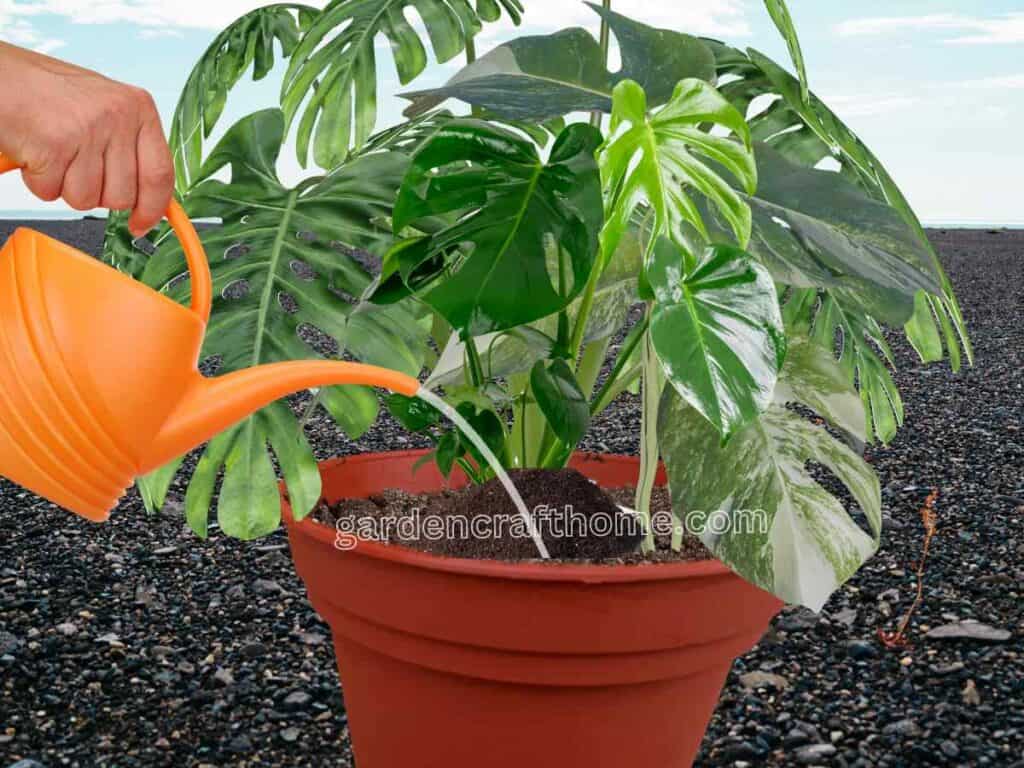
Continue watching until I start coming out from the drainage hole without obstruction or waterlogging.
If you notice that the water is slowly coming out from the drainage hole, consider reporting your Monstera plant later on.
To report your monstera safely, I invite you to read how to repot a monstera; click here now to read.
Position The Plant
Allow the surplus water to drain after watering. Once it has finished draining, send your plant back to its initial position.

Make sure it receives indirect sunlight or window light.
Are you interested? Click here to read about the best location for bonsai trees.
How To Tell If Monstera Is Overwatered
The first signal that Monstera sends us when we give it too much water is the yellowing of the leaves.
Yellowing of the leaves is a symptom that the plant is no longer able to absorb and transport the nutrients necessary for healthy growth.

For more information about the cause of monstera yellowing leaf and Its solution, click here to learn more.
The appearance of numerous leaf problems, such as necrotic spots and wilting of the leaves or the entire plant, follows the yellow leaves.
The following is the cause of yellowing leaves when Monstera is overwater.
As you can imagine, the problem happens at a radical level, and it happens for two reasons:
- The roots do not receive oxygen
- Fungi increase and cause the root system to rot.
Oxygen deficiency
Oxygen deficiency chokes the roots, prevents the roots from growing and reduces the plant’s ability to absorb nutrients.
In particular, nitrogen, which, in the absence of oxygen, is converted from nitrate (NO3) to nitrite (NO2) and is toxic at high concentrations.
Root rot
Root rot is caused by fungi that manage to enter the root system when the water stagnates for a long time.
Within a short time, they spread to the rest of the roots, causing them to rot.
No roots = no absorption.
The Symptoms That Indicate That We Are Giving Monstera Too Much Water
- Yellow leaves
- black or dark spots on the leaves
- rotten roots.
If the problem is mild, we can try stopping watering until the soil is completely dry.
If it is in an advanced state, you must immediately dig up the plant, remove all the rotten roots and repot it in an airy and very draining soil.
Use a systemic fungicide (I recommend Aliette ) if the problem persists.
For more information about how to report Monstera properly without damaging them, click here now to read more.
What Happens When You Give Monstera Too Little Water
The Monstera can tolerate a day or two without water very well unless it receives a lot of light, the temperatures are not excessively hot, or the air is very dry.
The first signs of dehydration are recognizable by the limp leaves that curl up, as well as by the loss of firmness of the plant, which falls on itself unless it is fixed to a pole or a backrest, of course.
For more information about fixing monstera to a pool, which means staking your monster. Click here to read more.
If neglected, the lack of water subsequently leads to the death of some roots, as well as causing the leaves to dry out starting from the edges.
If your Monstera is very dehydrated, gradually resume watering to prevent excess water from rotting the already-dry roots.
Should I Fertilize My Monstera After Watering
Yes, you can fertilize your Monstera after watering because Fertilizing after watering can help prevent potential root burn while also allowing the plant to absorb nutrients more effectively.
Also, remember that it is recommended to fertilize them during the growing season because it is generally advisable to fertilize during the spring and summer.
But suppose you see that it doesn’t need fertilizer. In that case, there is no need for fertilizing, or if the season does not require any atom of fertilizer, avoid applying fertilizer.
Note: it is not compulsory to fertilize immediately after fertilizing, so bear that in mind.
When To Fertilize Monstera
Generally speaking, Monstera Deliciosa (as well as Adansonii and many other species) should be fertilized from the end of March to the end of September, which corresponds to spring and summer.
During the summer, thanks to the abundant light, long days and heat, the plant’s metabolism is faster.
Monstera visibly grows more and needs nourishment to produce new plant tissue.
Like any plant, Monstera needs macro and micronutrients to grow and carry out all its metabolic functions.
If the environmental conditions are good, the plant can also grow during autumn or winter, especially if sunlight is integrated with artificial lamps.
It will, therefore, need fertilizer, even if it is winter. A very effective method is to fertilize the Monstera when it is producing new leaves.
It is a sign that she is growing and that she needs nourishment to do so. To learn more about fertilizing Monstera click here. [link]
Conclusion
How to water a Monstera or how often to water a Monstera has been made clear to you. First of all, I really appreciate reading this article.
It is important to check the soil moisture level before attending to water your monstera because over-watering will lead to yellowing leaves, which can cause death to your plant.
Keep in mind that we water frequently during the summer and less frequently during the winter.
But if your plant is located where it receives enough sunlight during the winter, your watering routine might change.
Below are more articles about Monstera. [Link]

